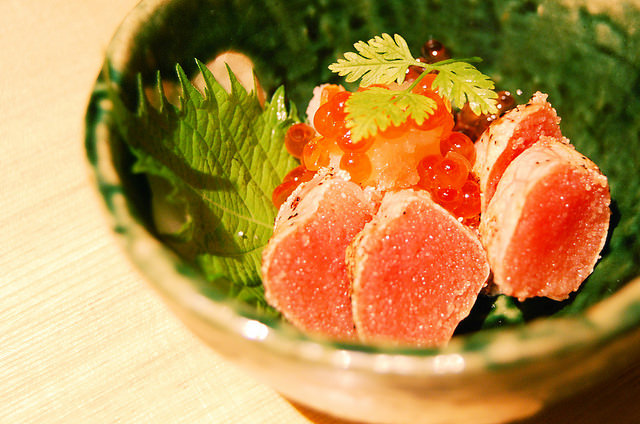
photo by sayo ts
The summer heat has gone, the storm season has settled down and the autumn has come. As described in idiomatic phrases like “autumn appetite” or “the sky is high and the horses are fat”, autumn is the best season for many types of food. Farmed goods, among other things, are in the middle of harvesting and fresh seasonal fruits and vegetables are piled on the display shelves in shops. Also, many kinds of seafood come into season. Special autumn menus are available at many restaurants and diners. This column will introduce Japanese autumn foods and ingredients you must try during this autumn.
“Shinmai” new crop rice

photo by demyan biglove
If you have learned Japanese language before, probably you know that “gohan” in Japanese means “steamed rice” in English. The Japanese often use the expression “eat rice” in the sense of “having meal”. As you can imagine from this, rice is a very basic and important ingredient in the Japanese diet. New crop of the year is harvested during autumn and dispatched from regions all over Japan. It starts around August at earliest and reaches its busiest time in September and October. Uncooked rice can be kept for quite a long period of time without losing its taste, but freshly cooked shiny new crop rice tastes outstandingly delicious. By the way, “shinmai”, new crop of rice is defined as the first crop of the year to be polished and packed by 31st December of the year. New crop rice is indicated on its package as “Shinmai (新米) “, as it is quite hard to tell new crop to previous year’s crop by looking.
Persimmons
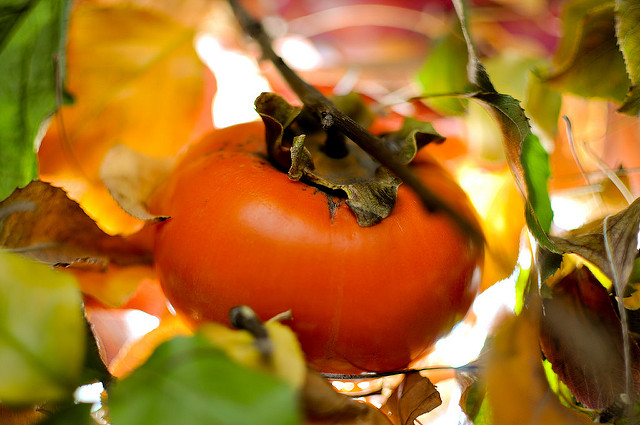
photo by Robert Otani
These days, persimmons can be seen at vegetable shops in many non-Asian countries. A persimmon fruit has a gentle sweetness without no sourness or bitterness, and comes into season around October to November. There are so many types of persimmon (“kaki” in Japanese) such as Jiro-kaki, Gosho-kaki, Hira-tanenashi-kaki, Saijo-kaki are cultivated all over Japan. All these Japanese persimmons can be roughly divided into two groups, “Ama-gaki” which is sweet and edible right off the tree, and “Shibu-gaki” which is astringent then cannot be eaten until astringency removal treatment is done. Persimmons are commonly cut in wedges and eaten fresh, but other than that, it can be pureed, added to cakes and buns as sweetener, added to salads or arranged in many other ways. Also, shibu-gaki lose the tanginess and sweetens once it is sundried. Dried shibu-gaki is called “Hoshi-gaki” and popular as a snack.
Sauries
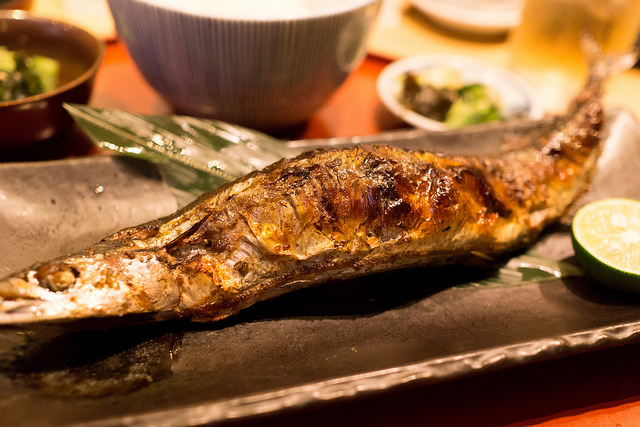
photo by Mayuki Sawatari
As often written “autumn-sword-fish (秋刀魚)” in Japanese, fat autumn sauries are one of the most popular autumn food of Japan. Grilled saury served with grated radish and saury sashimi are the most common ways to serve saury fish. Normally, the entire fish is served when it is grilled. You might be astounded if you are not used to eating a whole fish. Eating a boned fish with chopsticks might trouble you as well. But dokn7t warry, the meat of saury fish easily comes off the bones so it is not that hard as you might have imagined. Actually, grilled saury with grated radish and soy sauce go perfect with steamed rice so it is quite hard to stop eating. If the rice is “shinmai”, nothing can beat this combination.
Ginkgo nuts
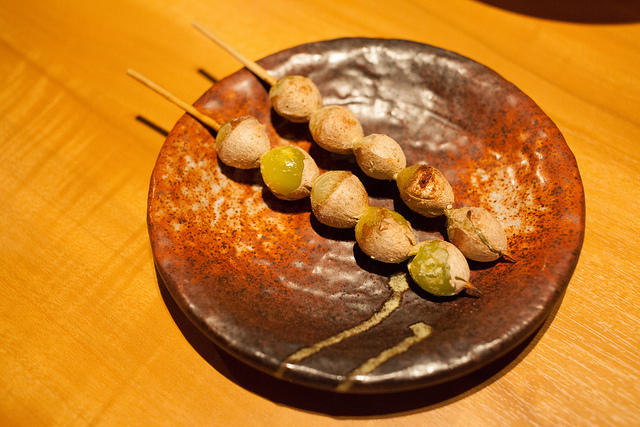
photo by Dickson
Bright yellow ginkgo leaves are one of the most symbolic Japanese autumn views. Not just ginkgo trees, but ginkgo nuts are very much loves by the Japanese as an autumn food. Most commonly, ginkgo nuts are served in “chawan-mushi” custard or just grilled with a pinch of salt after being heated and shelled. In fact, ginkgo nuts are attracting international attention because these nuts are rich in nutrition such as vitamin A and C, iron, potassium, magnesium and niacin that are considered as effective agents to improve leaning ability and prevent memory loss. So, ginkgo nuts are anti-aging super food as well as good taste. You can purchase ginkgo nuts from shops or pick the nuts under female ginkgo trees by yourself. Self-picked nuts must be dried well before eating. The size of gingko nuts is quite small and it is so easy to pop into your mouth one after another, but try not to eat too many as excessive consumption of gingko nuts may lead to toxic condition. Appropriate consumption for adults is up to 10 nuts.
Mushrooms
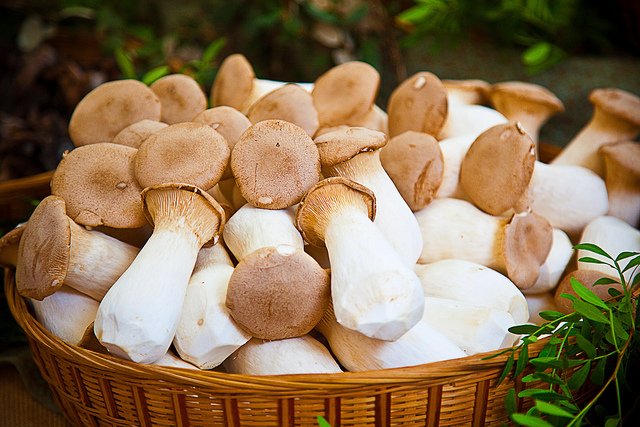
photo by Juan Antonio Capó Alonso
Of course you can purchase them from shops throughout the year, but the best season for mushrooms is autumn. Mushroom rice, stir fries, tempura or hotpot, mushrooms can be enjoyed in a number of dishes. Restaurants often use it as a main ingredients of their special autumn menus. High-fiber and low calorie mushrooms are perfect food during autumn and winter when you tend to eat more than usual. Also, autumn is the season for “matsutake” mushroom which is quite rare and difficult to cultivate. It is widely known for good aroma and often used in mushroom rice, grilled matsutake and clear soup. Also, try a mushroom hunting tour held by travel agents to enjoy picking mushroom by yourself in the woods and taste fresh mushrooms at the same time.
Special autumn confectioneries
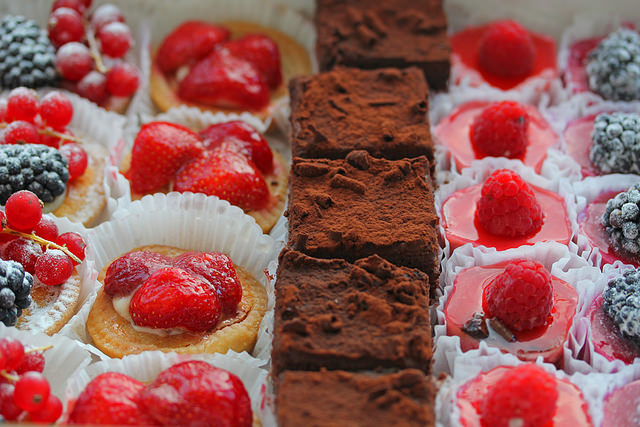
photo by Puno 3000
This is a little different from previously mentioned ones. As autumn is the best season for many foods, Japanese confectionery manufacturer and cake shops release special autumn edition of their products every year. The most popular ingredients are autumn vegetables and fruits that have sweet tastes such as chestnuts, sweet potatoes, pumpkins and pears. Once these autumn ingredients are added, ordinary products such as chocolates and ice creams taste a little upgraded. Shelves in confectionery section of super markets and convenient stores become full of those special autumn sweets. It is so hard to pick one so you may end up buying them all. Well, there is no wonder we put a little weight on during autumn.
Someone has found a little autumn
There are many more yummy autumn foods in japan but only a few have been introduce in this column. These can be easily purchased from shops for little price. Dining out or cooking those ingredients by yourself at home, try Japanese autumn gourmet in whatever way you feel like while you are in Japan. Just be careful with binge eating.
